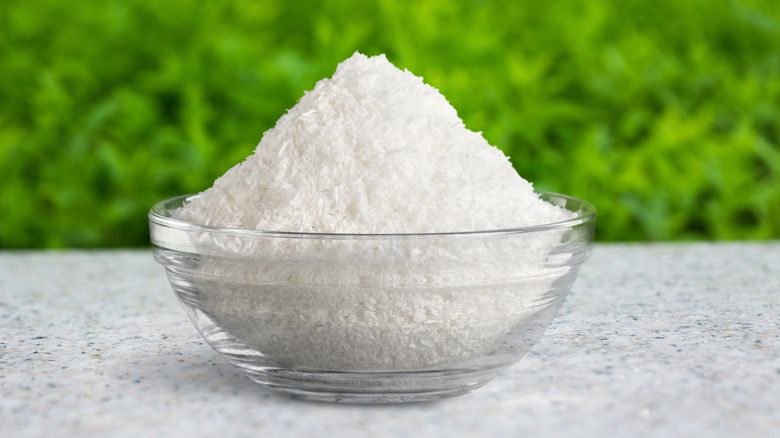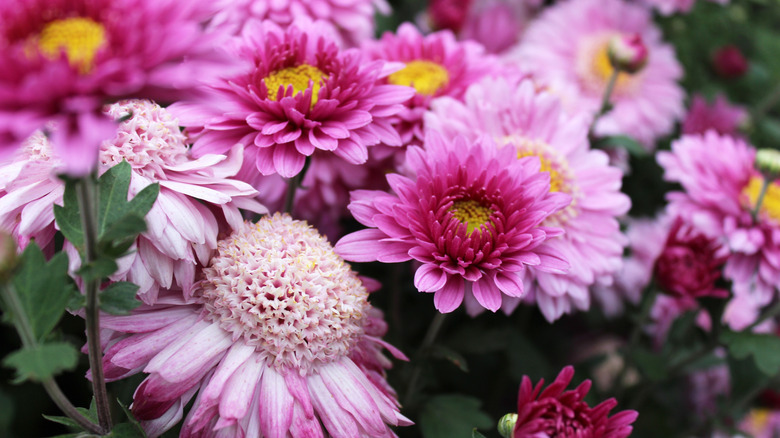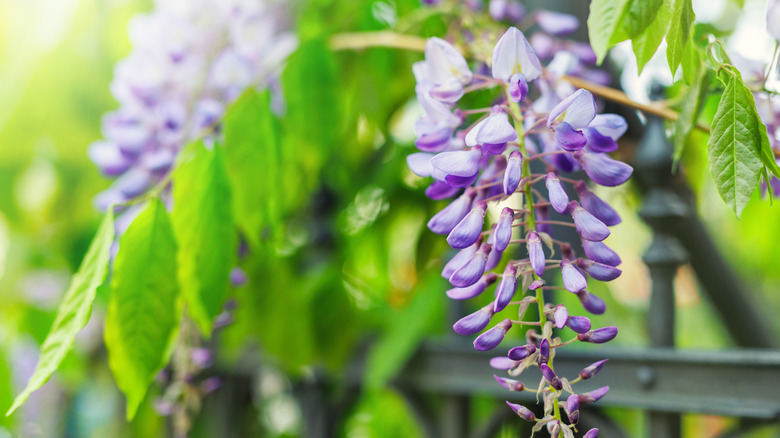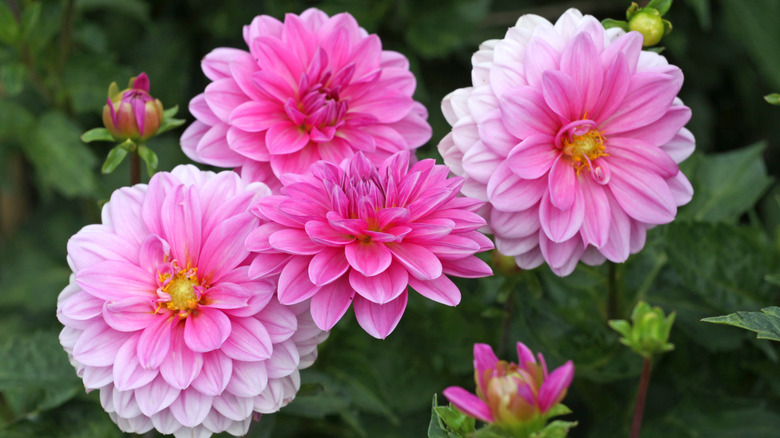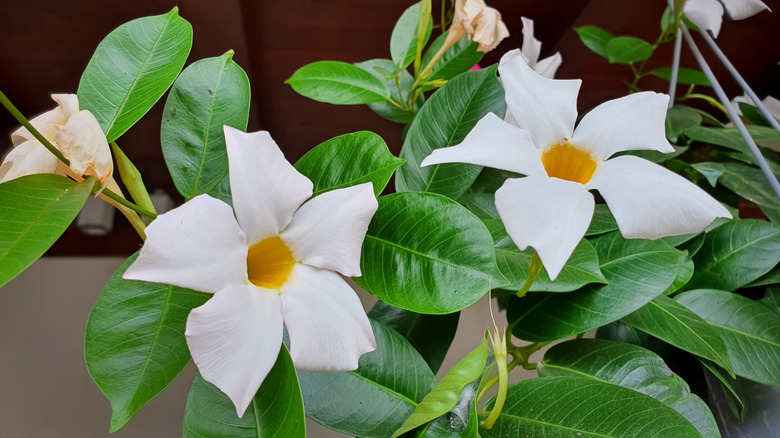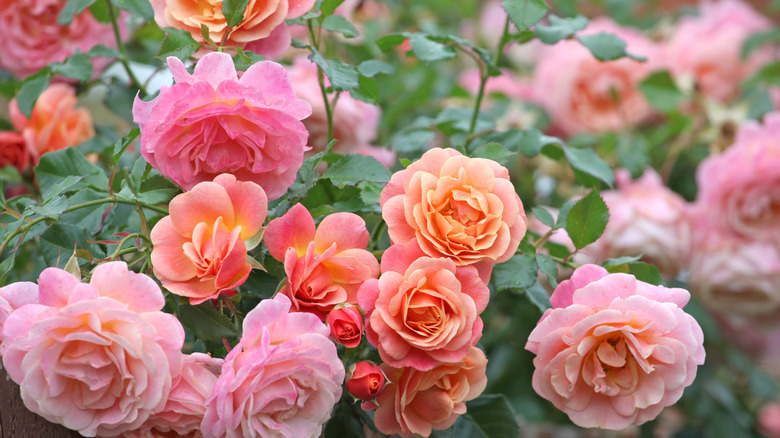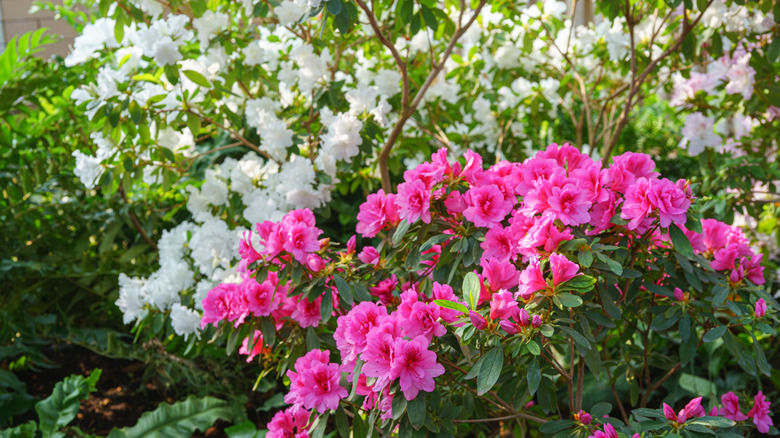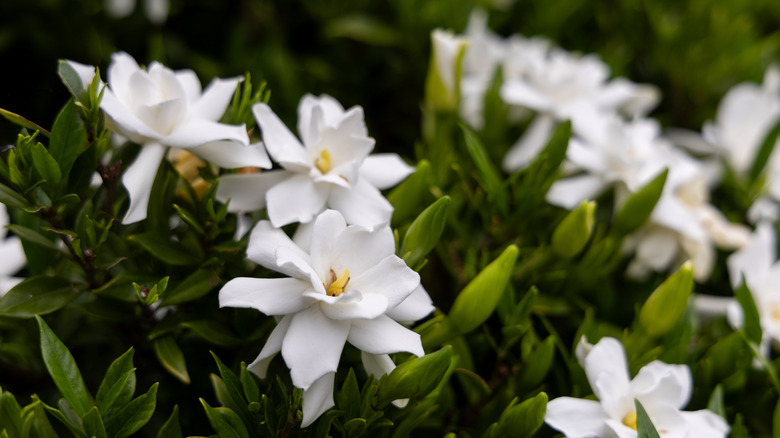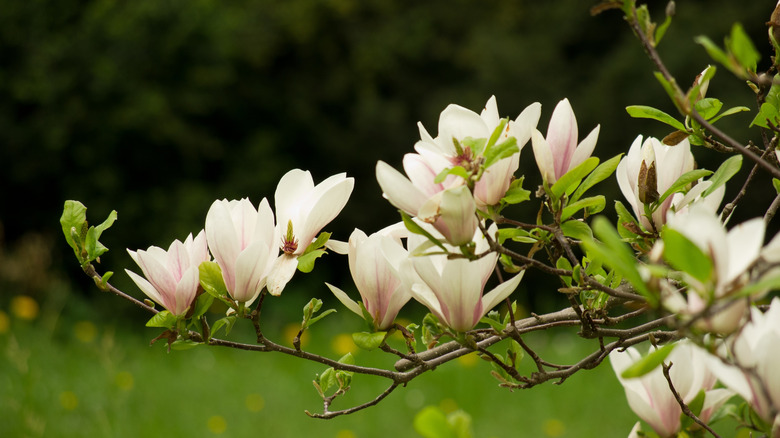8 Garden Flowers That Could Use A Boost Of Epsom Salt To Keep Blooming
Every once in a while, there comes a time when your garden's soil just can't keep up with your flowers' appetites. That is when many gardeners turn to Epsom salt. Mandevilla, dahlias, wisterias, and mums are just a few of the many flowers that can benefit from it. But exactly what is Epsom salt, and what does it do for your garden flowers? Chemically speaking, Epsom salt is magnesium sulfate — a colorless crystalline compound. In the garden, it is a prized, naturally-occurring mineral rich in magnesium and sulfur that can help you recharge your soil.
Magnesium is essential for plants. It's the central atom in chlorophyll, and without chlorophyll, they can't make their food. As for sulfur, it supports plant growth, boosts disease resistance, and even affects flower quality. Plants that lack sulfur may produce smaller flowers or have a distorted shape. On top of that, sulfur deficiency can even cause a change in pollen nutrients and composition. Clearly, this is something no gardener would want.
But don't go about sprinkling Epsom salt randomly around your flowers just yet. It is always better to perform a soil test before adding anything unless you are an expert and know how to identify and treat nutrient deficiencies in plants like a gardening pro. If needed, give these eight garden flowers a boost of Epsom salt to keep them blooming.
Mums
Chrysanthemums are an exceptionally easy flower to grow. There are a lot of varieties to choose from, and they keep flowering from late summer all the way through fall. However, if they don't get enough magnesium, mums can develop chlorosis. It tends to worsen around bloom time, which can have a significant effect on the quality of flowers. Nevertheless, to give your plants a magnesium boost, just mix a tablespoon of Epsom salt into a gallon of water and water your plants with it. Or sprinkle it dry around the base for a slow, steady boost.
Wisterias
A vigorous, cold-hardy, long-lived plant, wisteria is a fast-growing vine that can add deep fragrance and color to your yard. But what if your wisteria just won't bloom or is flowering a lot less than it used to? The issue could be a lack of magnesium and sulfur, which flowering plants need to thrive. Don't worry, though! You can fix it by adding Epsom salt to your garden's soil. If deficiency is confirmed after a soil test, add about ½ cup of Epsom salt to the soil at the base of your wisteria vines.
Dahlias
Loved for their vibrant blooms, dahlias are a favorite in many gardens and a top choice for cut flower arrangements. But the dahlias you are hoping for might fall short if your plants are low on magnesium, a pretty common deficiency with the flowers. Epsom salt, however, can help rescue your plants. A light sprinkle of Epsom salt over the soil is all it takes. It will feed your dahlias as they grow and also help those blooms shine brighter than ever.
Mandevillas
If trumpet-shaped flowers are your thing, you've probably heard of mandevillas. They produce flowers in summer and fall, even when the plants are still very young. But just like other garden flowers, mandevillas need magnesium and a deficiency might stop it from producing those lovely blooms. So, test the soil, if your plants are not flowering and if the soil test confirms, mix about one tablespoon Epsom salt per 1 gallon of water and apply it to the soil to give your plants a boost.
Roses
Everyone wants roses (Rosa spp.), but they want plenty in return. These beauties are heavy feeders, and even when established, won't perform their best if not fed well. They need magnesium to keep their beautiful green foliage from discoloring as well as sulfur, which, can cause the top foliage to become pale if deficient. But it is not something you can't solve with a bit of Epsom salt. Just sprinkle a teaspoon per one foot of the plant's height around the base every six weeks during the growing season.
Azaleas
There's a lot to love about azaleas (Rhododendron indicum). They have beautiful blooms, many varieties even offer colorful fall foliage, and there's no shortage of options for gardeners to pick from. They are one of the plants that could benefit most from Epsom salt. A magnesium deficiency shows up fast in azaleas. The leaves start yellowing between the veins, then soon after, reddish-purple blotches appear, and eventually, the leaves die off. To fix this, apply about one tablespoon of Epsom salt for every ten square feet of the planting area.
Gardenias
Gardenia (Gardenia jasminoides) is a delicate little shrub, often grown in home gardens and loved for its intoxicatingly fragrant flowers. But if your gardenias are not flowering, try applying a little bit of Epsom salt. It's generally recommended to mix about 0.7 ounces of it in one quart of water. This amount will easily cover about 11 square feet of soil. Then, apply this Epsom salt solution evenly around the drip line of your gardenias and you are good to go.
Magnolias
Loved for their showy and fragrant blooms, magnolias are large shrubs that are often pruned into small trees with a single trunk. Just like any other flowering plant, they too need magnesium, and plenty of gardeners stand by Epsom salt as their go-to trick for thriving, lush magnolias. For a quick boost, dissolve 1 tablespoon of Epsom salt in a gallon of water and apply it as a foliar spray. This simple mix supports healthy green growth and enhances flower production.
